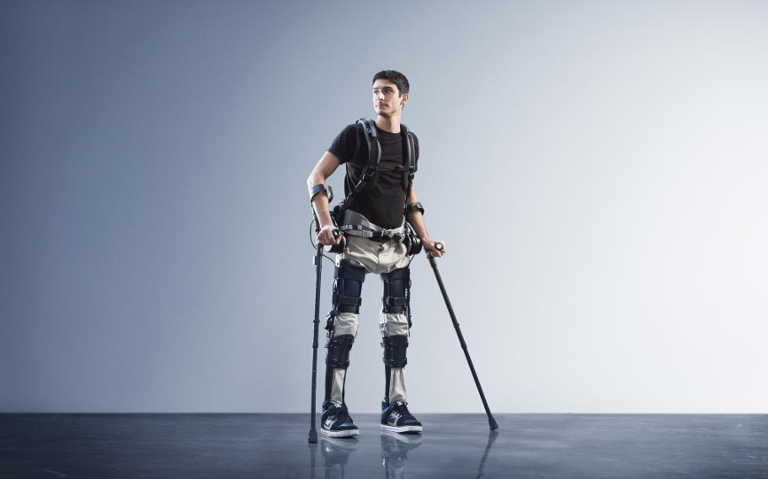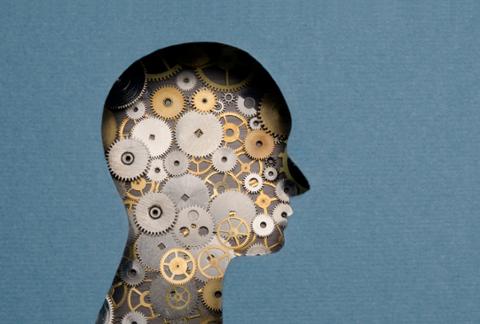If you’ve seen any of the
Iron Man movies, you know it’s all about the suit. Tony Stark, as played by Robert Downey, Jr., is the epitome of suave wit—but without his metal shell, he’s just another engineer who’s made good. Once he’s sealed himself into his
Autonomous Prehensile Propulsion Suit, though, he has everything from self-repair capabilities to plasma-based propulsion, all guided with the assistance of an advanced A.I. As a vehicle, it might not be as big as one of
Larry Ellison’s catamarans, but it’s a lot flashier and can blow things up. The exoskeleton is a technology platform that, while young, is gaining traction in industrial, medical and military circles. For several years, the U.S. Special Operations Command has been working on a Tactical Assault Light Operator Suit, or "TALOS," that would provide “provide [infantry with] comprehensive ballistic protection and peerless tactical capability,”
in the words of Gen. Joseph Votel, SOCOM’s commander. Meanwhile, several companies—including Raytheon, Ekso Bionics and US Bionics—are working on products that could help the disabled become more mobile, or allow warehouse and other workers to handle physical tasks with greater efficiency and safety. Designing and building such products involves a heavy dose of mechanical engineering. But turning a bulky exoskeleton into something that allows people to move with superior agility and strength involves a fair amount of IT know-how, as well. The key is in developing embedded software systems that allow essentially isolated devices to coordinate their work, while at the same time collecting data that can be used to analyze the machine’s overall performance.
A Chain of Technology
Homayoon Kazerooni, president of Berkeley-based US Bionics and a professor of mechanical engineering at UC Berkeley, divides the technology used in these products into two parts. There’s the control software, the code that allows the machine to do what it’s supposed to do. Then there’s the human-machine interface, which collects data and transmits it to a server to follow and measure what the suit’s operator is doing. Those platforms demand the involvement of backend specialists who can program and maintain the server receiving the telemetry data, as well as data scientists who can analyze it. “In anything you wear, you need embedded control software to run at high speed so it can follow the person’s movements,” Kazerooni explained. “It has to do that without impeding or endangering the user. The stuff going to the server helps determine things like, ‘Was this a good walk?’ and, ‘What was the landscape like?’” Written mostly in C, the controller for US Bionics’ products collects signals from different components and coordinates them to make the whole apparatus work in sync. It’s a very short program, Kazerooni said, which runs at a very high speed to measure aspects such as a limb’s joint angles and pressures being exerted. The human-machine interface, he said, is written mostly in C++. (You can check out an example of the company’s work in the image above.)
Engineering Experience is Key
According to Kazerooni, control and software engineers are the leads in developing these next-generation products. He looks for candidates with engineering master’s degrees: Mechanical or electronics majors for those who want to work on the controller, computer-science majors for those interested in the human-machine interface. Because the industry is in its infancy, employers understand there aren’t many candidates out there who’ve worked on these kinds of projects. So when it comes to experience, they look for good programming skills, as well as an understanding of A.I. and lower-level machine language. Experience with electro-mechanical devices is also helpful. “This is like programming any machine,” he added. “You need an understanding of the human-engineering dynamic.” Although he can’t estimate the ultimate size of the market for these intelligent exoskeletons, Kazerooni describes the industry as “fast-growing, but infant,” with “very diverse uses” for the suits. “Every person who contributed to this project or tested the device believes that many industrial workers will benefit from our technology,” he said. He believes the machines can “transform” industry “by reducing workplace-injury cost, increasing production efficiency, and improving quality of life for employees.”


